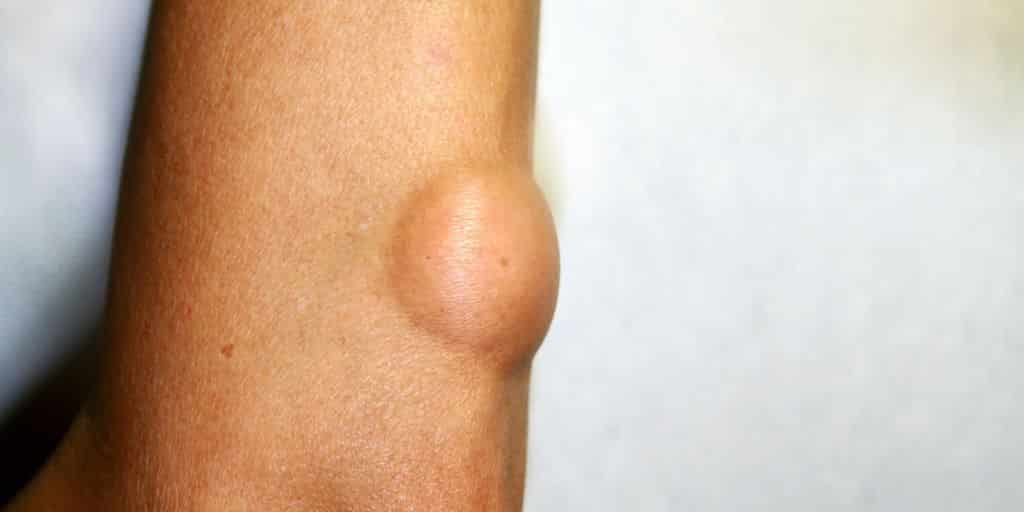Lipomas are a type of adipose tissue tumor, or, to put it another way, fat that develops in the soft tissues of the body. They are typically non-threatening and develop at a moderate rate. Lipomas are benign tumors that develop in the subcutaneous and subfascial tissue of our bodies.
These manifest themselves as soft, spherical, and moveable masses. They are normally asymptomatic and without any discomfort. However, if the tumor is in close vicinity to nerves or has a functional blood supply, it may produce discomfort when touched.

Lipomas are generally considered to be innocuous; however, their location can cause them to become cancerous. This occurs when they grow in visceral organs and tissues, interfering with the normal function of those tissues and organs.
In most cases, the development of lipoma begins in middle-aged persons between the ages of 40 and 60. Single solitary lipomas are more common in women than in men. Men, on the other hand, tend to acquire them in clusters, which is a disease known as lipomatosis.
The expense of lipoma excision treatment in India is determined by the size, quantity, and location of the tumor. When it comes to lipomas in the head, neck, and upper back, they are more difficult to operate on than when they are in the extremities or trunk. It costs between 3500 - 30,000 rupees (Expected Price) to have a lipoma excision performed in India.
Depending on how they appear under a microscope, lipomas can be classified into several categories, which are detailed below:
A lipoma is typically diagnosed with a basic physical exam or through the use of a CT scan.
In the event that a lipoma becomes large or unpleasant in nature, the doctor will do extensive examinations to determine the cause. They may conduct the following examinations:
A lipoma can typically be surgically removed by a doctor. This is carried out by doing a small cut on the lipoma itself. The lipoma is then pressed out of the way after this is completed. A local anesthetic is used in this situation. It is a straightforward technique. After a few days, it is possible to return home. It is done for lipomas that are smaller in size.
The bigger ones are eliminated by the use of larger incisions. Liposuction is another technique that can be used to accomplish this. The cannula, which is a thin tube, is used to remove the excess fat from the body in this approach. The material that has been extracted will be forwarded to a laboratory for analysis. This is where you may double-check it.
Finally, Lipomas are fatty tumors that develop beneath the skin and are completely innocuous. Most of the time, they are completely innocuous and do not cause physical discomfort. However, there are few situations where they are found to be malignant in nature. When a lipoma becomes painful, it is imperative that you get medical assistance as soon as possible after discovering it.
Q1. What should I do after lipoma surgery?
After you’re done with your lipoma surgery and remove the bandage, you should wait at least the first 24 hours before showering as normal. You can also wash the area with soap and water and then use a cotton swab to clean the blood or clots on the crust. After that, you should apply a thin layer of ointment or antibiotic ointment prescribed by your doctor.
Q2. What are the side effects of lipoma surgery?
The side effects of lipoma surgery are the development of scar, risk of infection, or risk of bleeding. These can recur when they cut out again. If you feel any side effects, consult your doctor and have it taken a look at.
Q3. How long does it take to recover from lipoma removal surgery?
The recovery period for lipoma removal surgery ranges from two to three weeks depending on the patient’s status and procedure. You will start feeling normal within the first two weeks. However, you can resume your daily normal activities after the first 24 hours.
Q4. Can I walk or do light exercise after lipoma surgery?
You will need a bit of recovery and rest before you can resume normal walking or light exercises. Do not indulge in highly physical strenuous activity right after surgery. Wait for your recovery period and you can resume light walking and a few range-of-motion exercises after that.
Q5. Can I eat after lipoma surgery?
You should avoid eating fried and oily food and also look to abstain from milk and citrus products for a day or two after your surgery. You can include easy-to-digest and eat foods like soups, khichadi, and others in your diet for the time being after lipoma surgery or until your doctor suggests eating anything else.